
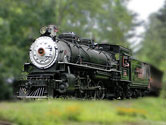






 |
Kentucky Railway MuseumHonoring Kentucky’s railroads and the people who built them |
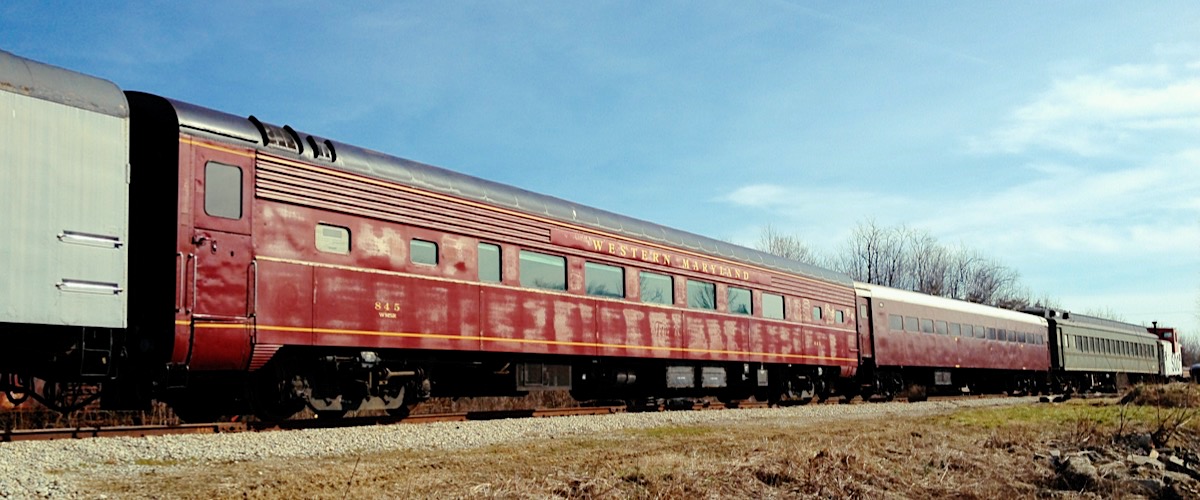
New Haven, Ky / Feb 2012 / RWH

 he Kentucky Railway Museum owes its beginning to a small number of rail enthusiasts who formed a local chapter of the National Railway Historical Society in 1948. In the early 1950s, the Chapter asked the Louisville and Nashville Railroad for the donation of a steam locomotive to form the nucleus of a railway museum.
The museum was officially chartered in 1954, and with the donation of steam locomotive #152, we leased six acres of land on River Road and opened to the public on Memorial Day 1958. The museum grew with the addition of other donated rail equipment and artifacts, with over 100,000 visitors coming through the gates by the early 1960s. Over 200,000 people came to the River Road site in the first 10 years of operation!
he Kentucky Railway Museum owes its beginning to a small number of rail enthusiasts who formed a local chapter of the National Railway Historical Society in 1948. In the early 1950s, the Chapter asked the Louisville and Nashville Railroad for the donation of a steam locomotive to form the nucleus of a railway museum.
The museum was officially chartered in 1954, and with the donation of steam locomotive #152, we leased six acres of land on River Road and opened to the public on Memorial Day 1958. The museum grew with the addition of other donated rail equipment and artifacts, with over 100,000 visitors coming through the gates by the early 1960s. Over 200,000 people came to the River Road site in the first 10 years of operation!
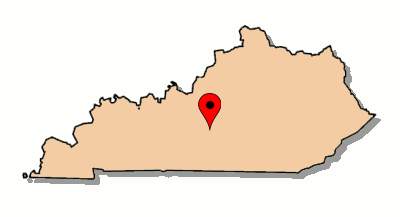
 he Kentucky Railway Museum is located in New Haven, Kentucky, and is a railroad museum dedicated to educating the public on the history and heritage of Kentucky's railroads. Originally created in 1954 and based in Louisville, Kentucky, the museum is now at its third location, in southern Nelson County. The museum owns four steam locomotives, six diesel locomotives, and over a hundred pieces of rolling stock. Four of the pieces are separately on the National Register of Historic Places, including Louisville & Nashville steam locomotive No. 152.
he Kentucky Railway Museum is located in New Haven, Kentucky, and is a railroad museum dedicated to educating the public on the history and heritage of Kentucky's railroads. Originally created in 1954 and based in Louisville, Kentucky, the museum is now at its third location, in southern Nelson County. The museum owns four steam locomotives, six diesel locomotives, and over a hundred pieces of rolling stock. Four of the pieces are separately on the National Register of Historic Places, including Louisville & Nashville steam locomotive No. 152.

Click to see the museum location plotted on a Google Maps page
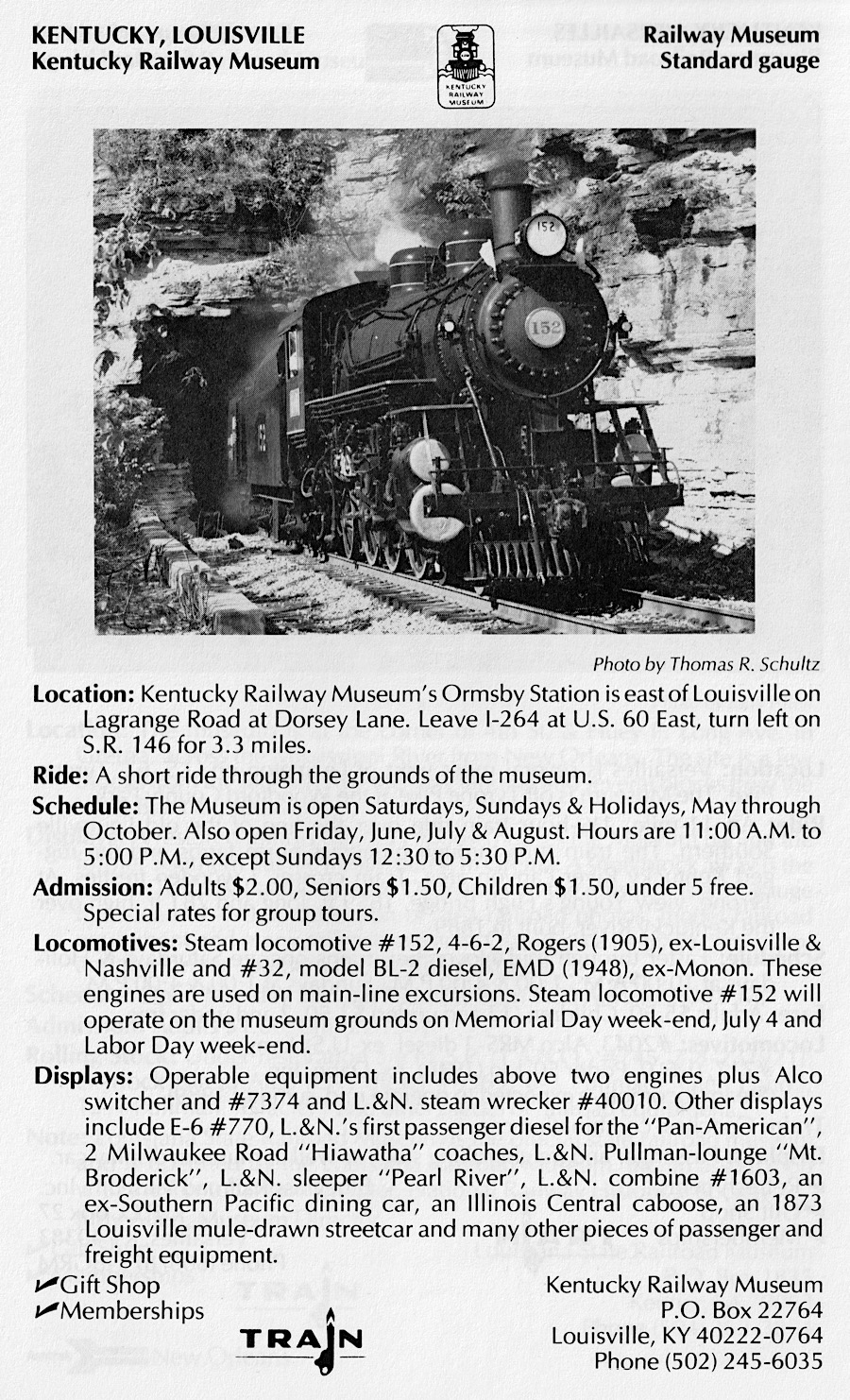
1989 tourist train guide ad / collection

1994 tourist train guide ad / collection
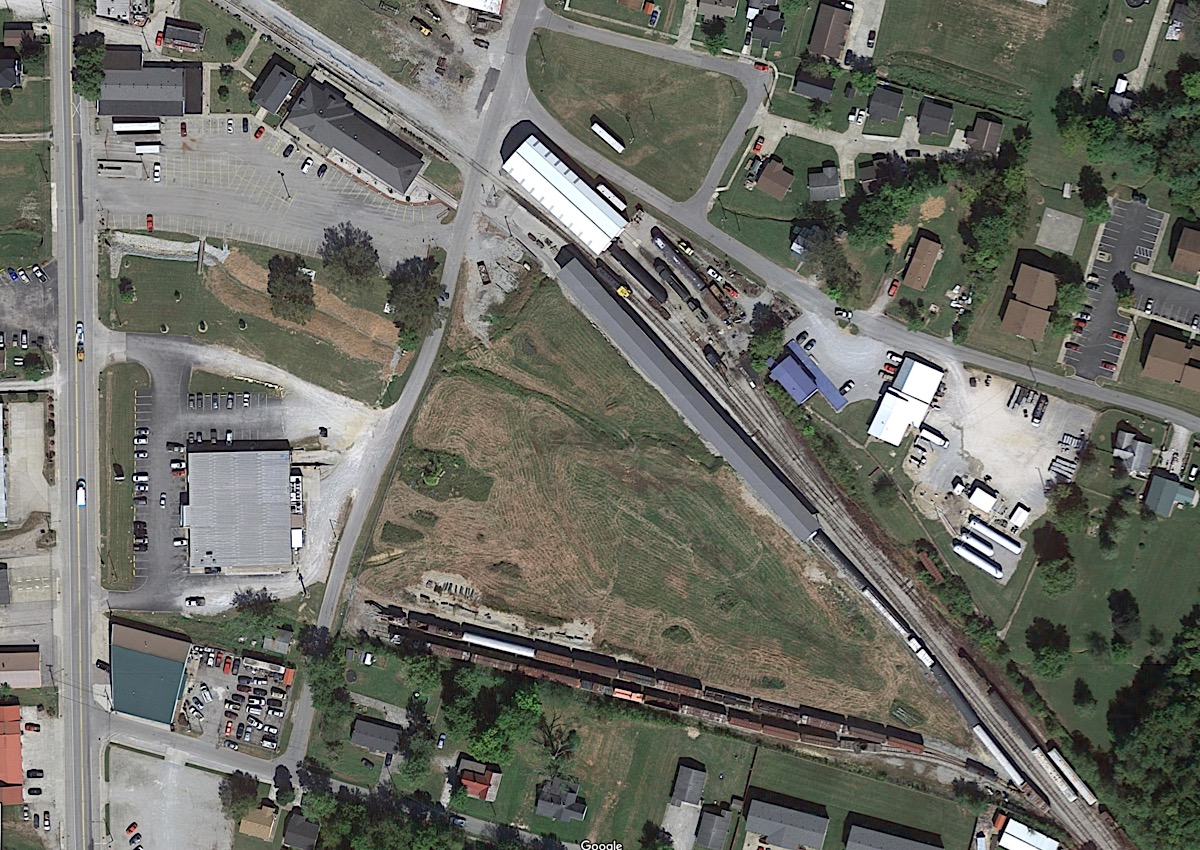
museum overhead / Google Maps
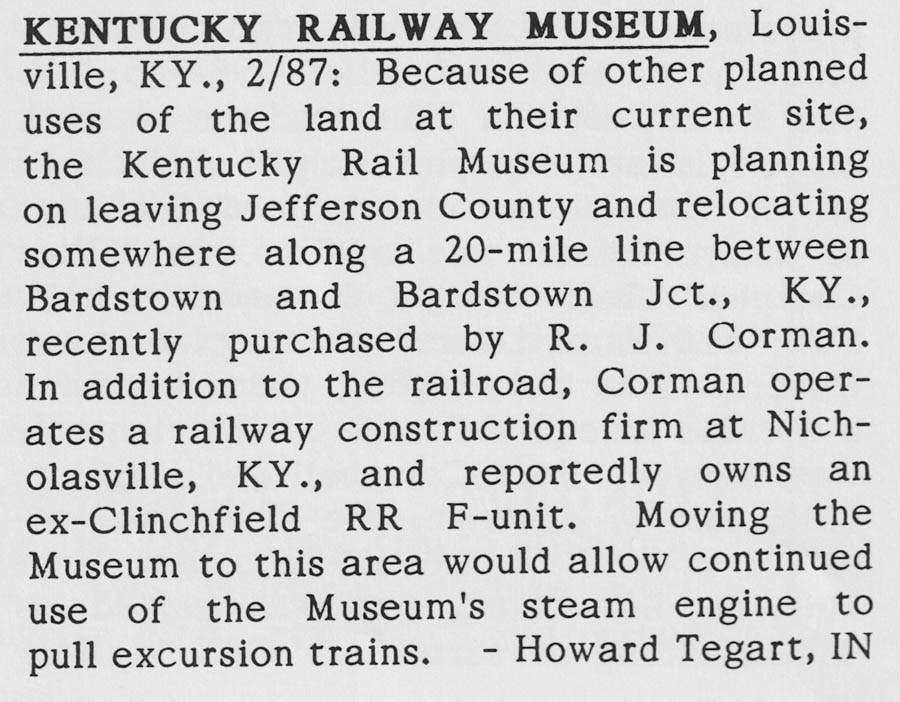
from The Short Line magazine - Apr 1987 / collection
Motive Power
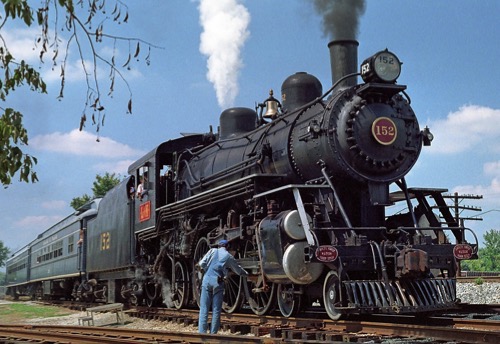
Louisville & Nashville #152
Louisville, Ky / Sep 1989 / Joe Vittitoe


Louisville & Nashville #152
3rd of 25 in class K-2A
retired Feb 1953
to Kentucky Railway Museum
out of service awaiting overhaul

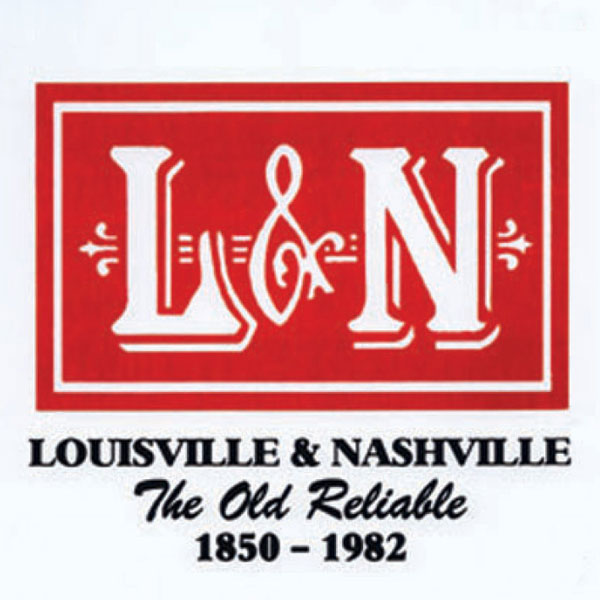 The L&N #152 was built in 1905 at Paterson, New Jersey by the Rogers Locomotive Works, with 6256 as its Rogers Construction Number. The Louisville and Nashville Railroad purchased #152 and four identical Pacifics at the cost of $13,406 apiece. Pleased with their five Pacifics, the L&N purchased forty more, which the Rogers Locomotive Works (by now owned by the American Locomotive Company) sold to the L&N between 1906 and 1910.
The L&N #152 was built in 1905 at Paterson, New Jersey by the Rogers Locomotive Works, with 6256 as its Rogers Construction Number. The Louisville and Nashville Railroad purchased #152 and four identical Pacifics at the cost of $13,406 apiece. Pleased with their five Pacifics, the L&N purchased forty more, which the Rogers Locomotive Works (by now owned by the American Locomotive Company) sold to the L&N between 1906 and 1910.
Originally, the L&N #152 serviced stations in Alabama, Georgia, Kentucky, and Tennessee. It pulled Theodore Roosevelt's campaign train between Louisville and Cincinnati in 1912. When more powerful locomotives were purchased by the L&N in the 1920s, the Pacifics were assigned to the Gulf Coast, a geographically flatter area. Railroad logs prove that #152 was one of the many "Pan American" passenger service. The #152 also pulled the car holding Al Capone on his way to Alcatraz. As time went on, the #152 was used for less and less important routes. On February 17, 1953, the #152, the last surviving "K" class Pacific, was retired by the L&N, with its fate uncertain. During this time it was stored at Mobile, Alabama. L&N President John E. Tilford personally ordered the locomotive to not be destroyed and turned to scrap.
Eventually the #152 was sent to the Kentucky Railway Museum, then located at 1837 East River Road in Louisville, Kentucky; it was one of the museum's first pieces. For thirty years it remained inoperative. After thirteen years of work, in September 1985 it was again in working condition, thanks to funding by the National Park Service and the Brown Foundation. On April 26, 1986 it was again in service, pulling seven railcars with a total of 365 passengers. While being refurbished, it stayed at the River Road location when the rest of the museum moved to its new location at Ormsby Station.
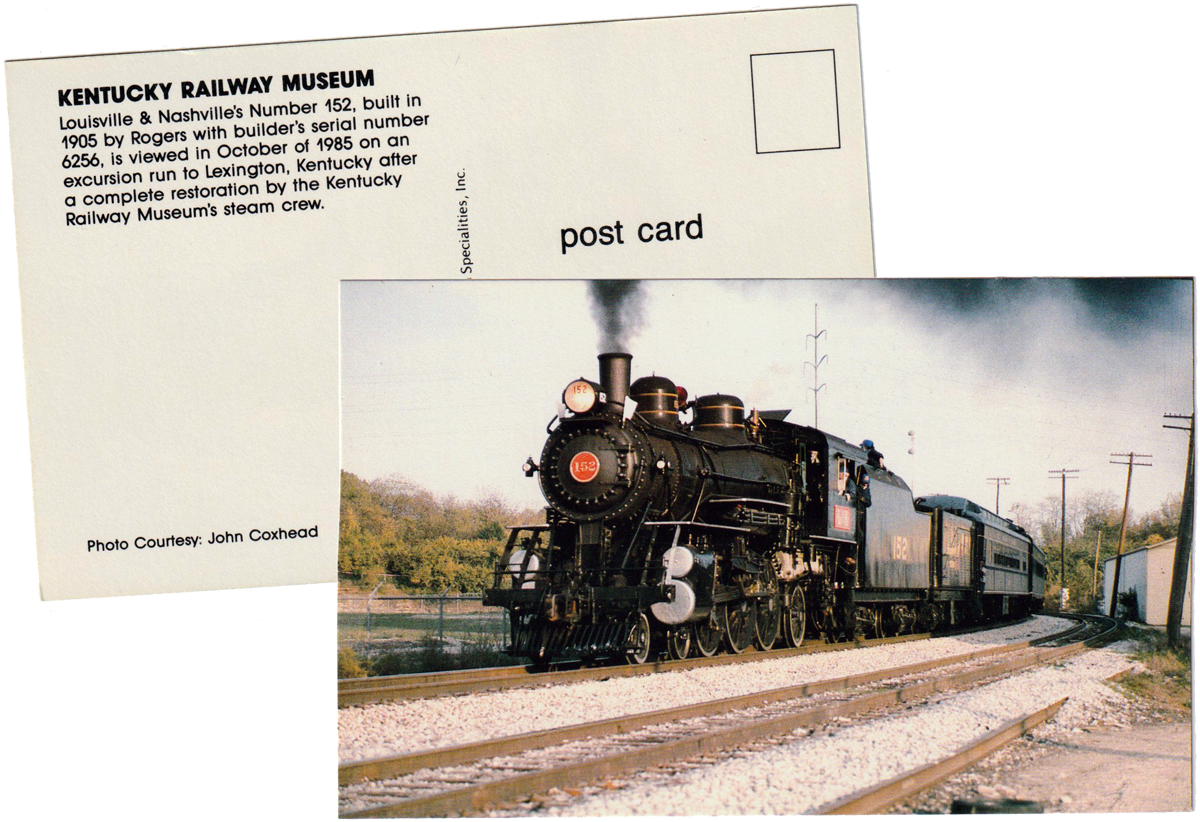
postcard / collection

Atchison, Topeka & Santa Fe #2546
New Haven, Ky / Feb 2012 / RWH


Atchison, Topeka & Santa Fe #2546
to Atchison, Topeka & Santa Fe #2546
to Indiana Railroad #2546
to Kentucky Railway Museum
never repainted; only preserved CF7
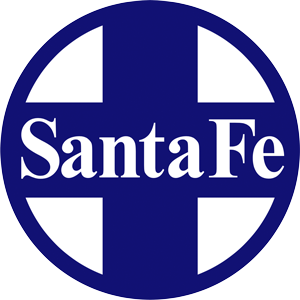
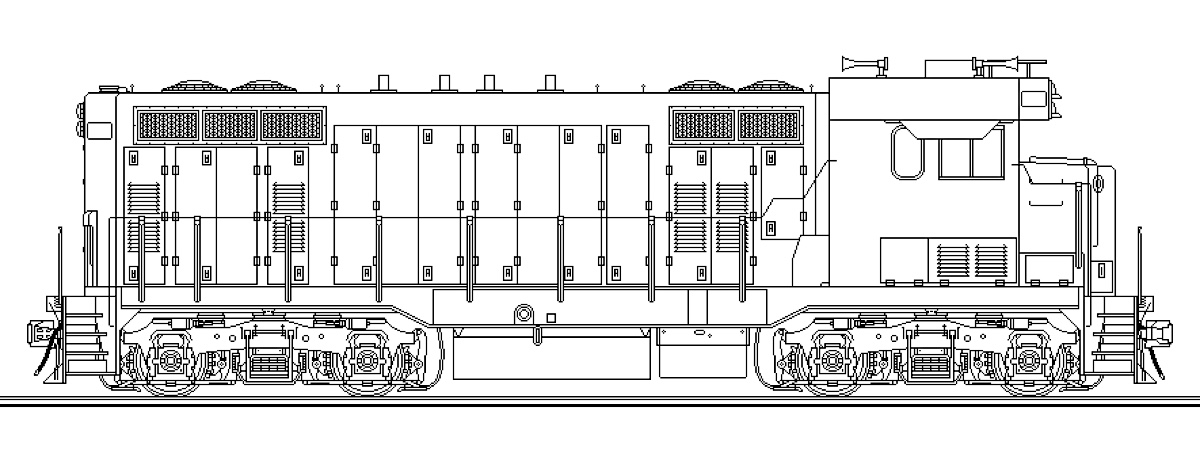
collection
The CF7 is an EMD F-unit railroad locomotive that has had its streamlined carbody removed and replaced with a custom-made, "general purpose" body in order to adapt the unit for switching duty. All of the conversions were performed by the Atchison, Topeka and Santa Fe Railway in their Cleburne, Texas workshops between October, 1970 and March, 1978. The program was initiated in response to a system-wide need for more than 200 additional four-axle diesel hood units to meet projected motive power demands on branch lines and secondary main lines.
Santa Fe's aging fleet of 200-series F-units were in dire need of overhaul, and were not suitable for switching service in their original configuration due to the poor visibility resulting from their full-width carbody; the engineer was required to stick their head out of the window in order to see the end of the train or locomotive when coupling and uncoupling cars. As new, state-of-the-art locomotives cost upwards of $150,000 each at the time, Santa Fe elected to experiment with modifying its existing F-units to serve their purpose, which they hoped they could accomplish for around $60,000 each.
Changes in business philosophy led the company to sell off its entire CF7 inventory by 1987, with most of the units (all but nine) ending up in the hands of regional and short-line railroads, and a few excursion lines. A number remain in service today.
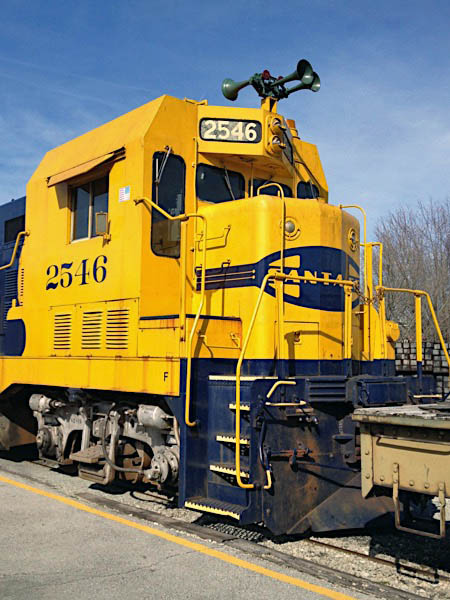
New Haven, Ky / Feb 2012 / RWH

New Haven, Ky / Feb 2012 / RWH
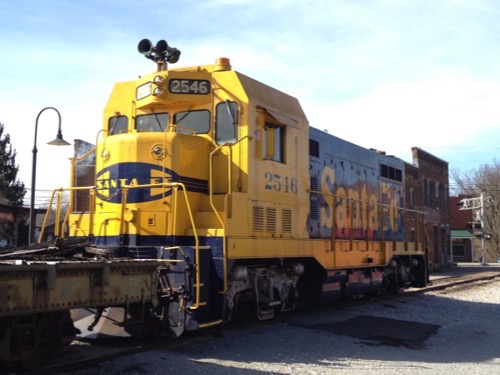
New Haven, Ky / Feb 2012 / RWH

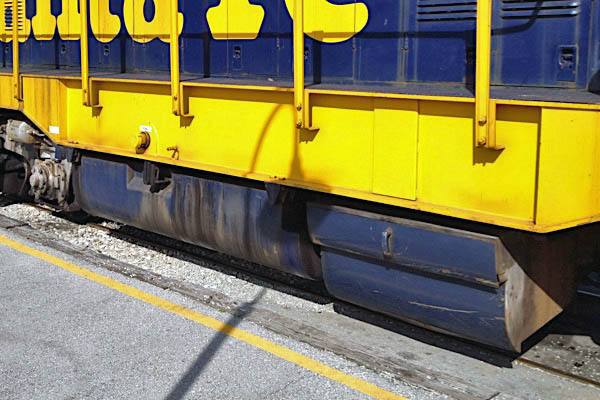
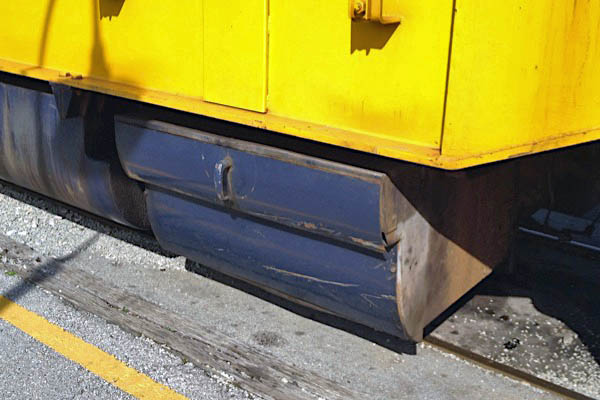
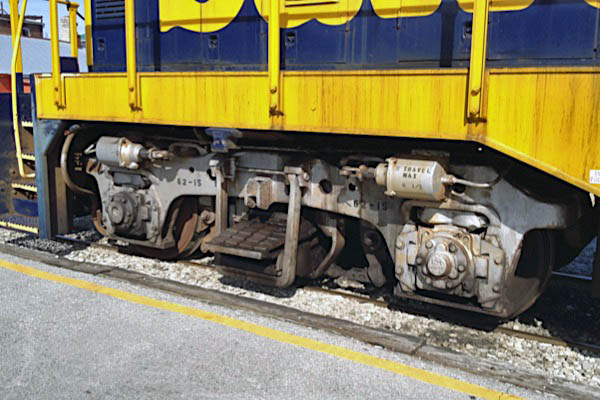
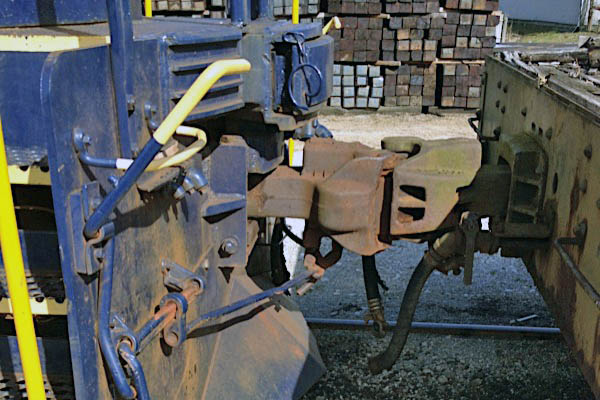
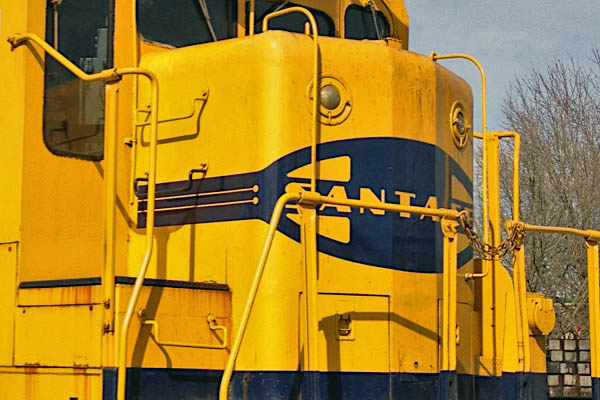
New Haven, Ky / Feb 2012 / RWH

New Haven, Ky / Feb 2012 / RWH

New Haven, Ky / Feb 2012 / RWH
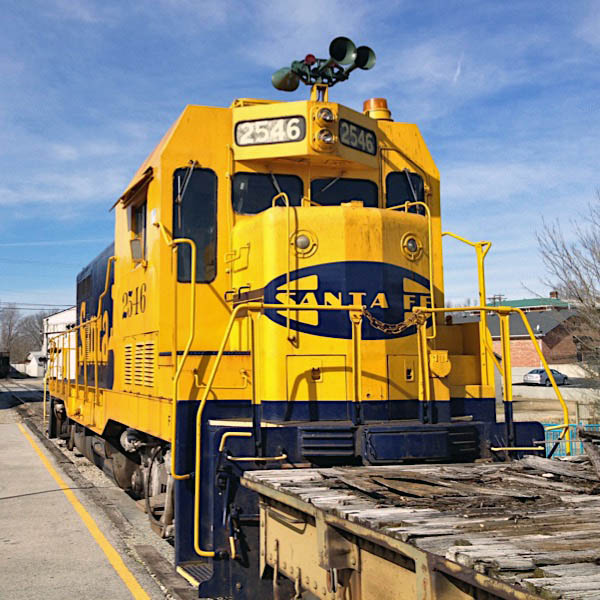
New Haven, Ky / Feb 2012 / RWH
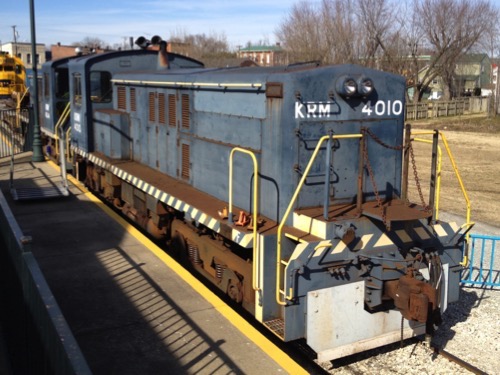
Kentucky Railway Museum #4010
New Haven, Ky / Feb 2012 / RWH


Kentucky Railway Museum #4010
to US Air Force #4010
to Kentucky Railway Museum #4010
to Larry's Truck & Electric leasing

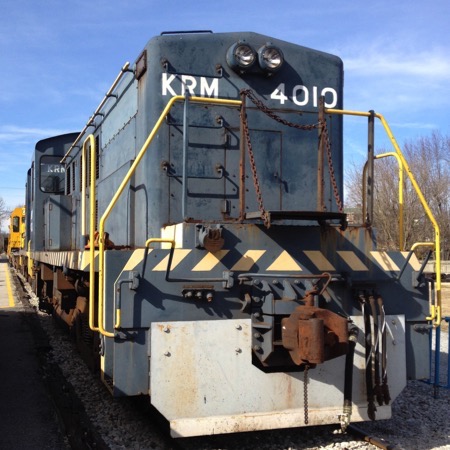
New Haven, Ky / Feb 2012 / RWH
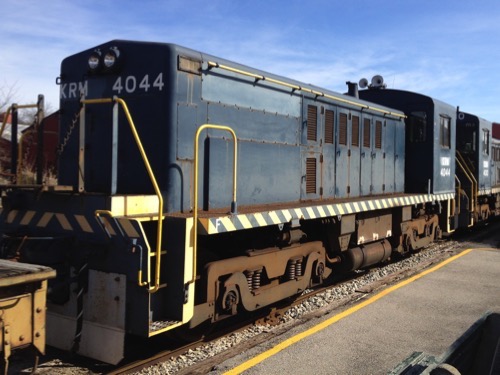
Kentucky Railway Museum #4044
New Haven, Ky / Feb 2012 / RWH


Kentucky Railway Museum #4044
to United States Air Force #4044
to Kentucky Railway Museum #4044
to Larry's Truck & Electric leasing

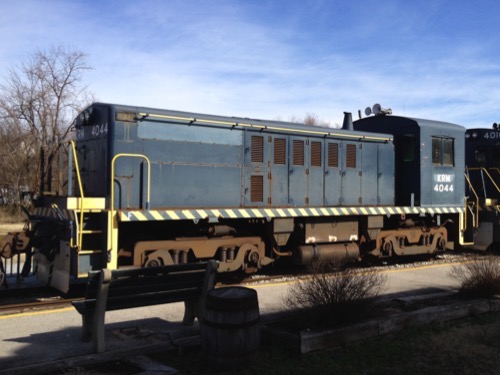
New Haven, Ky / Feb 2012 / RWH
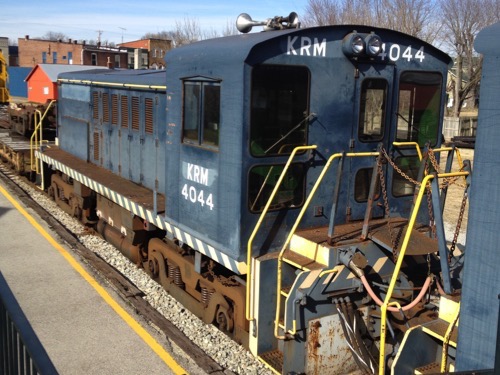
New Haven, Ky / Feb 2012 / RWH
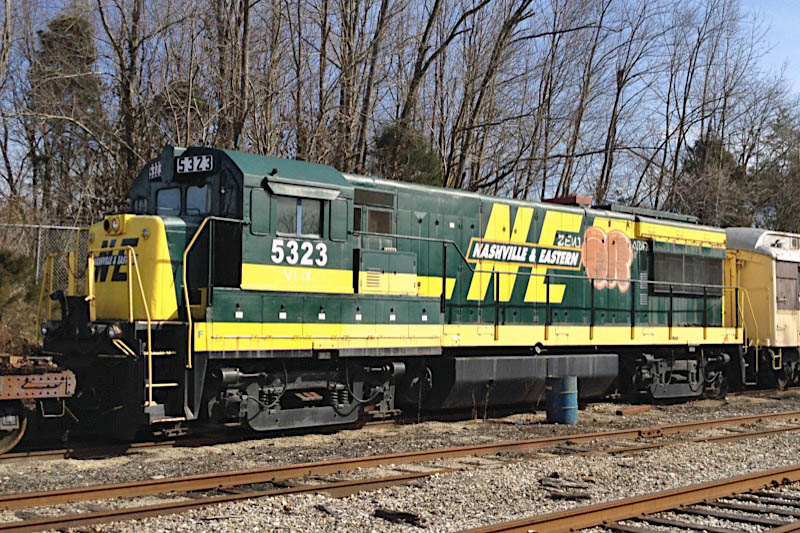
Nashville & Eastern #5323
New Haven, Ky / Feb 2012 / RWH


Nashville & Eastern #5323
1 of 5 in L&N order (2500-2504)
to Seaboard System #5323
to CSX Transportation
to Nashville & Eastern #5323
to Vintage Locomotives Inc.

Rolling Stock

Missouri-Kansas-Texas #884
heavyweight coach (1930) / New Haven, Ky / Feb 2012 / RWH

Western Maryland Scenic Railroad #845
Pullman Standard coach (1950) / New Haven, Ky / Feb 2012 / RWH

Soo Line #29
caboose / New Haven, Ky / Feb 2012 / RWH
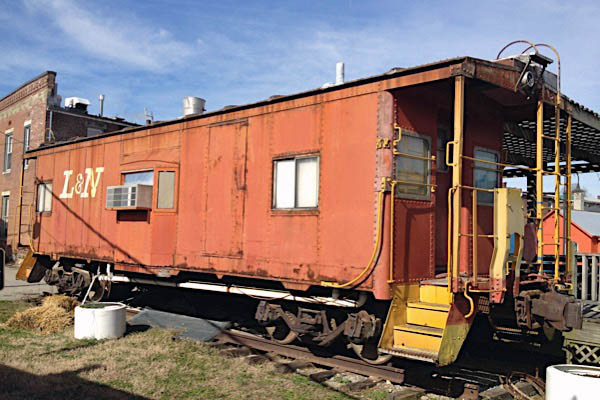
New Haven, Ky / Feb 2012 / RWH
Publications
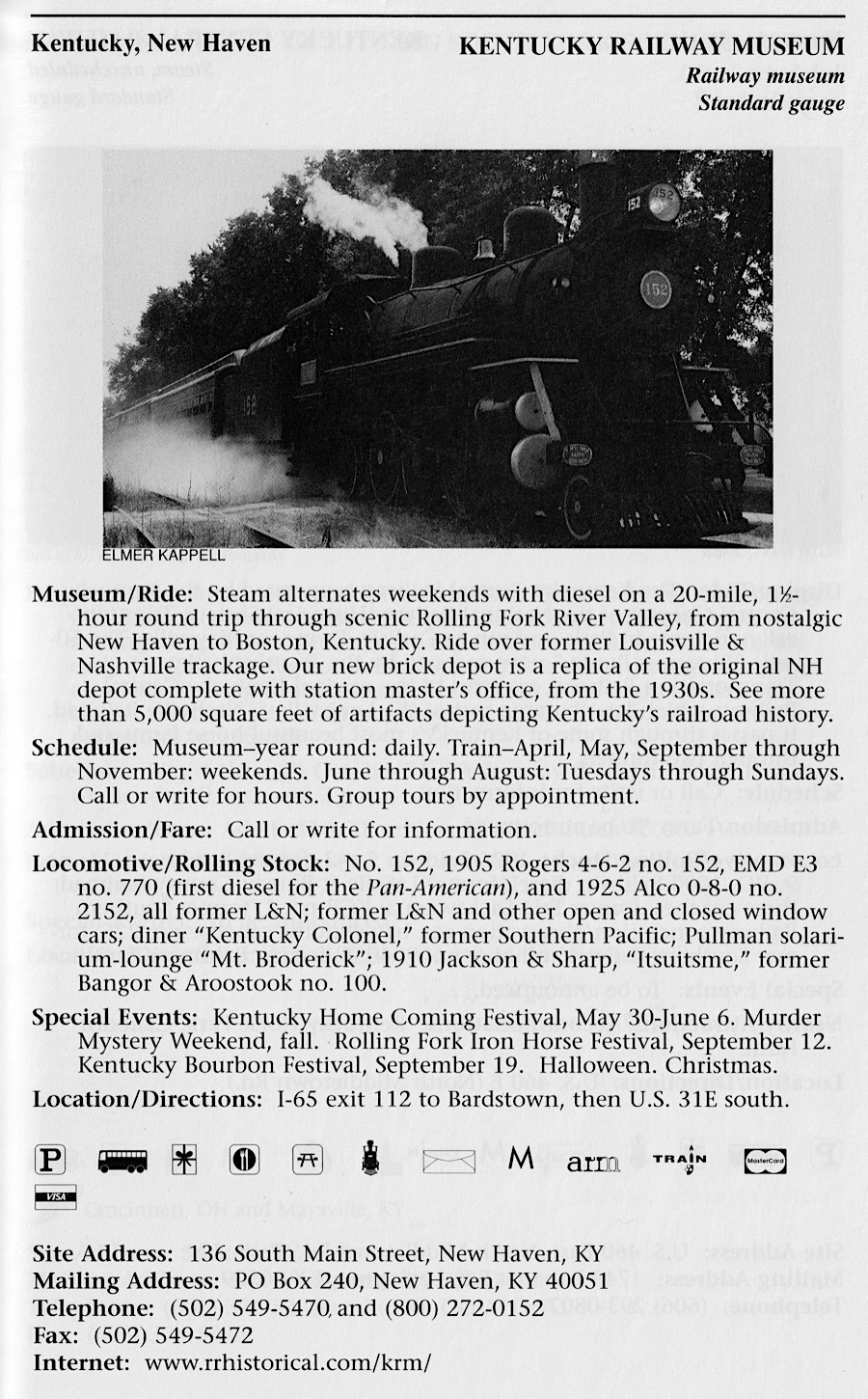
1998 tourist train guide ad / collection
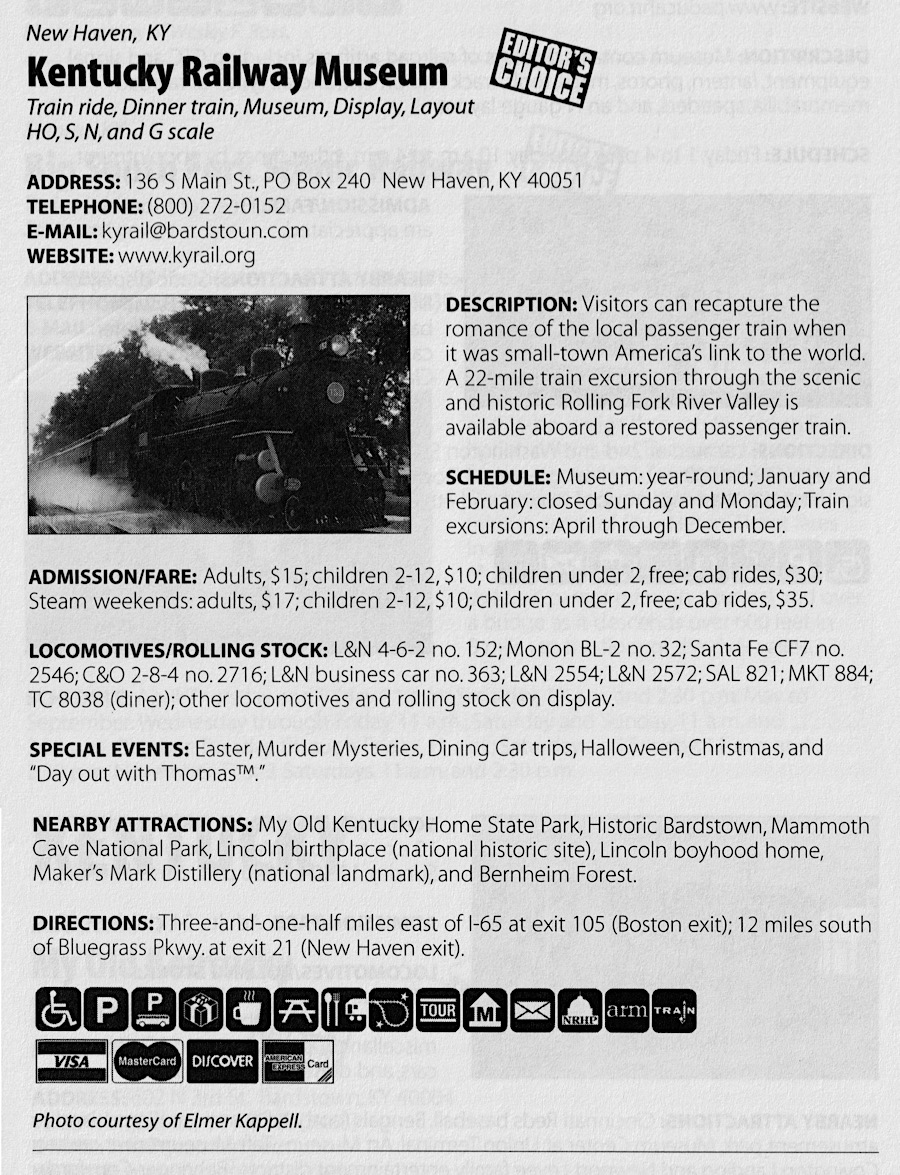
2006 tourist train guide ad / collection
Lagniappe



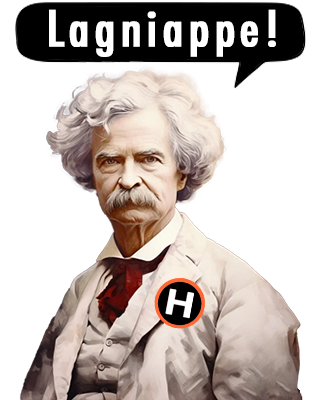
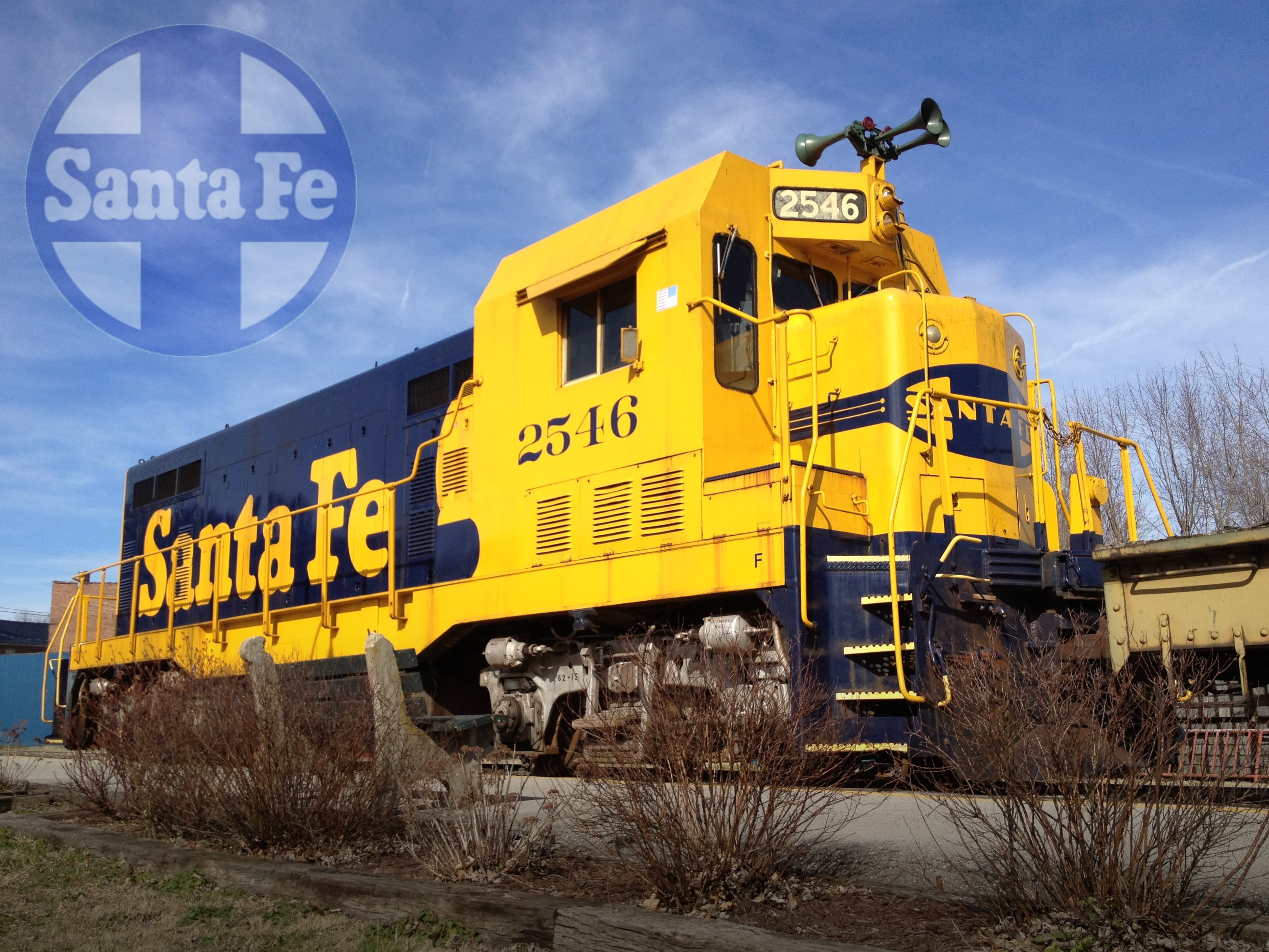
Cleburne Celebrity
New Haven, Ky / Feb 2012 / RWH

Old and New Together
New Haven, Ky / Feb 2012 / RWH
 Snapshots
Snapshots

New Haven, Ky / Feb 2012 / RWH
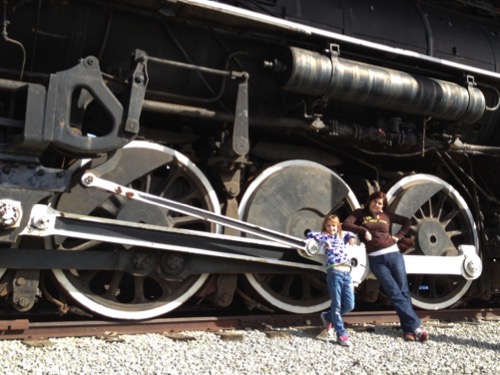
New Haven, Ky / Feb 2012 / RWH
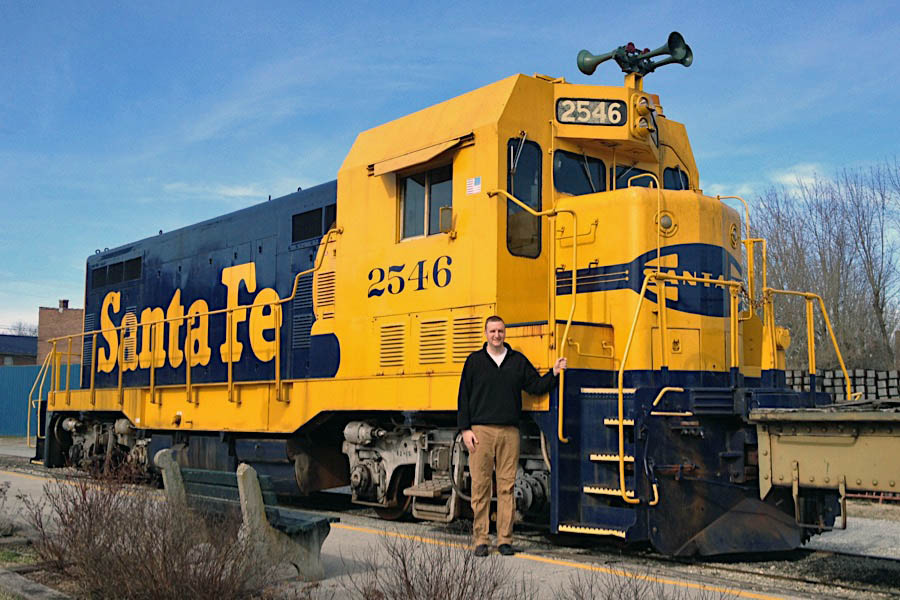
New Haven, Ky / Feb 2012 / RWH

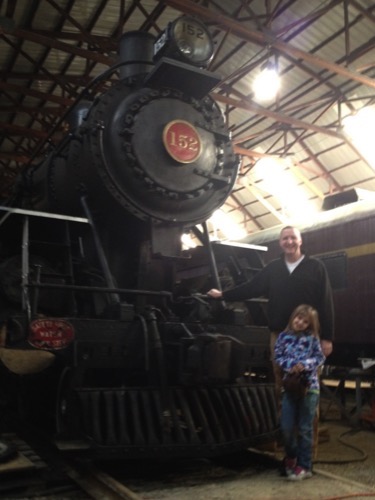 I still remember the TRAINS magazine cover featuring high-stepping Louisville & Nashville Pacific #152. All my life I've known about the locomotive, but never had a chance to see her in person, much less in operation. A trip to Nashville in 2012 to see friends there afforded me an afternoon visit to 152's caretakers in New Haven, Ky. Not much was going at the museum, but a hospitable volunteer was kind enough to let us into the museum's repair shop to see 152, stored serviceable until there is enough money to perform her next major overhaul. The shop was dark and crowded, but there was enough light to appreciate just how tall she stands.
I still remember the TRAINS magazine cover featuring high-stepping Louisville & Nashville Pacific #152. All my life I've known about the locomotive, but never had a chance to see her in person, much less in operation. A trip to Nashville in 2012 to see friends there afforded me an afternoon visit to 152's caretakers in New Haven, Ky. Not much was going at the museum, but a hospitable volunteer was kind enough to let us into the museum's repair shop to see 152, stored serviceable until there is enough money to perform her next major overhaul. The shop was dark and crowded, but there was enough light to appreciate just how tall she stands.
Outside, I was thrilled to discover that the Museum's most dependable mover these days is a freshly-painted, restored CF7. Dressed up in the company's yellow and blue scheme, #2546 presents as a perfect specimen for the ATSF Cleburne rebuild program. The Museum did a fine job putting the unit back in its original paint; all of the telltale CF7 features are easy to discern and interpret.
Links / Sources
- Kentucky Railway Museum website
- Diesel Shop roster for Kentucky Railway Museum
- Wikipedia entry for Kentucky Railway Museum
- Wikipedia entry for Louisville & Nashville #152

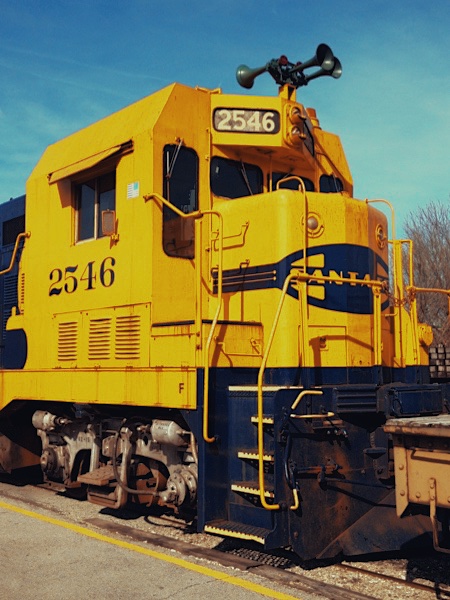
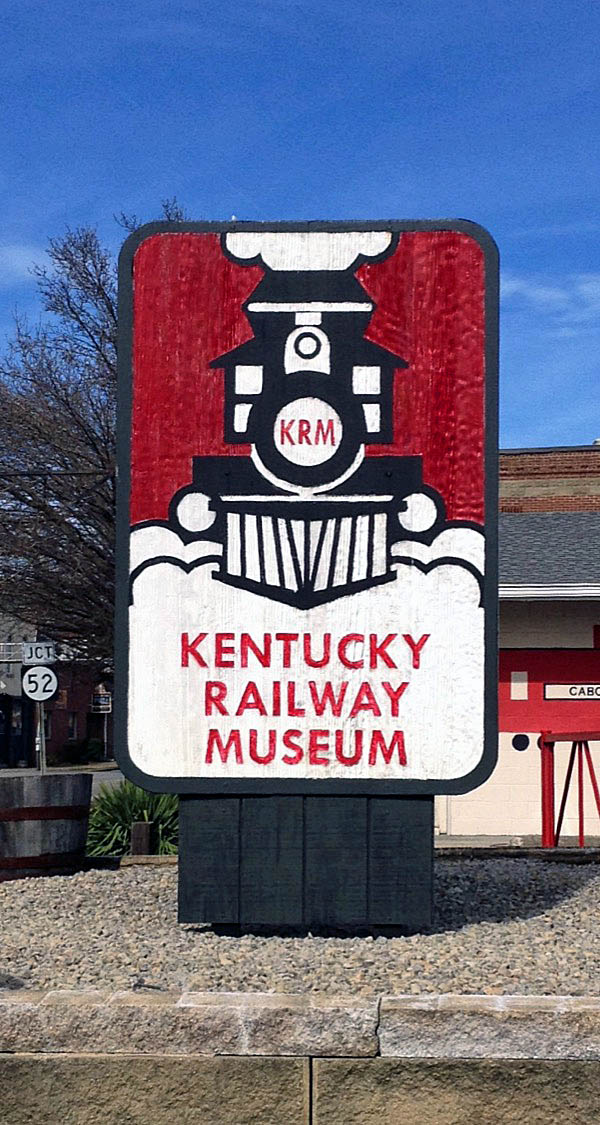
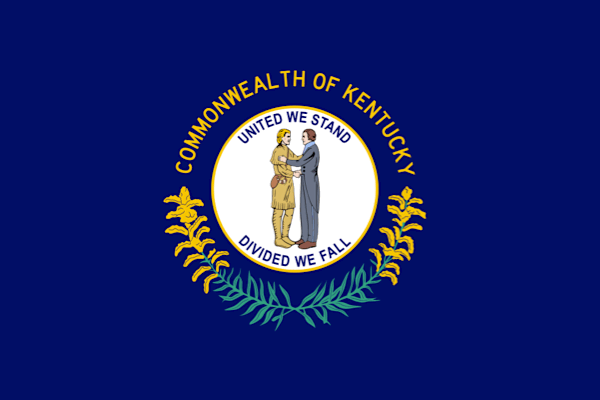
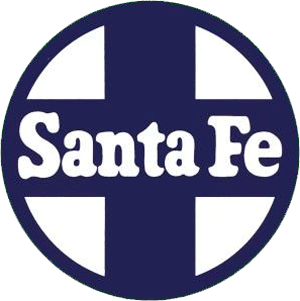 The CF7 is an EMD F-unit railroad locomotive that has had its streamlined carbody removed and replaced with a custom-made, "general purpose" body in order to adapt the unit for switching duty. All of the conversions were performed by the Atchison, Topeka and Santa Fe Railway in their Cleburne, Texas workshops between October, 1970 and March, 1978. The program was initiated in response to a system-wide need for more than 200 additional four-axle diesel hood units to meet projected motive power demands on branch lines and secondary main lines.
The CF7 is an EMD F-unit railroad locomotive that has had its streamlined carbody removed and replaced with a custom-made, "general purpose" body in order to adapt the unit for switching duty. All of the conversions were performed by the Atchison, Topeka and Santa Fe Railway in their Cleburne, Texas workshops between October, 1970 and March, 1978. The program was initiated in response to a system-wide need for more than 200 additional four-axle diesel hood units to meet projected motive power demands on branch lines and secondary main lines.

